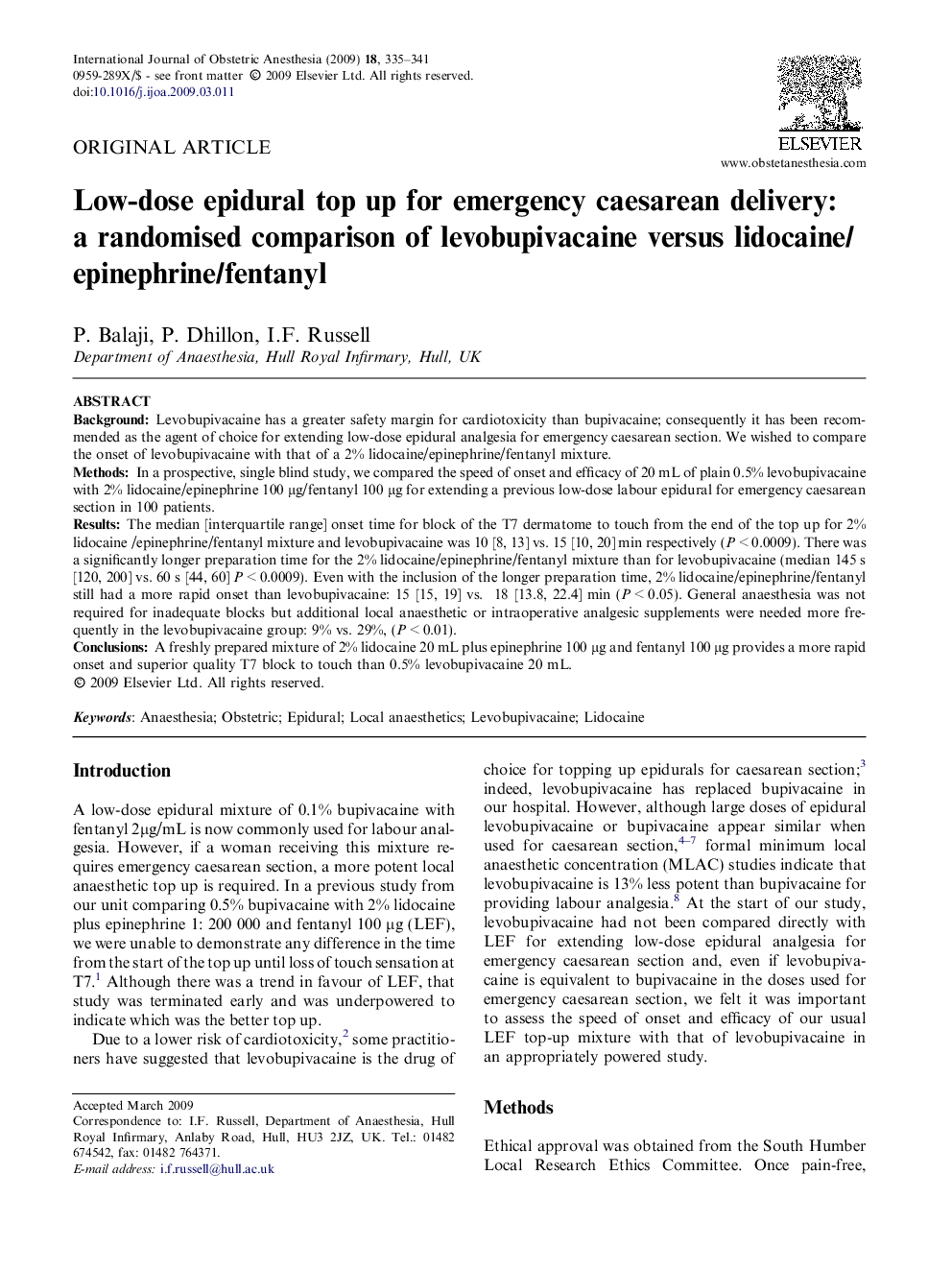| Article ID | Journal | Published Year | Pages | File Type |
|---|---|---|---|---|
| 2757950 | International Journal of Obstetric Anesthesia | 2009 | 7 Pages |
BackgroundLevobupivacaine has a greater safety margin for cardiotoxicity than bupivacaine; consequently it has been recommended as the agent of choice for extending low-dose epidural analgesia for emergency caesarean section. We wished to compare the onset of levobupivacaine with that of a 2% lidocaine/epinephrine/fentanyl mixture.MethodsIn a prospective, single blind study, we compared the speed of onset and efficacy of 20 mL of plain 0.5% levobupivacaine with 2% lidocaine/epinephrine 100 μg/fentanyl 100 μg for extending a previous low-dose labour epidural for emergency caesarean section in 100 patients.ResultsThe median [interquartile range] onset time for block of the T7 dermatome to touch from the end of the top up for 2% lidocaine /epinephrine/fentanyl mixture and levobupivacaine was 10 [8, 13] vs. 15 [10, 20] min respectively (P < 0.0009). There was a significantly longer preparation time for the 2% lidocaine/epinephrine/fentanyl mixture than for levobupivacaine (median 145 s [120, 200] vs. 60 s [44, 60] P < 0.0009). Even with the inclusion of the longer preparation time, 2% lidocaine/epinephrine/fentanyl still had a more rapid onset than levobupivacaine: 15 [15, 19] vs. 18 [13.8, 22.4] min (P < 0.05). General anaesthesia was not required for inadequate blocks but additional local anaesthetic or intraoperative analgesic supplements were needed more frequently in the levobupivacaine group: 9% vs. 29%, (P < 0.01).ConclusionsA freshly prepared mixture of 2% lidocaine 20 mL plus epinephrine 100 μg and fentanyl 100 μg provides a more rapid onset and superior quality T7 block to touch than 0.5% levobupivacaine 20 mL.
